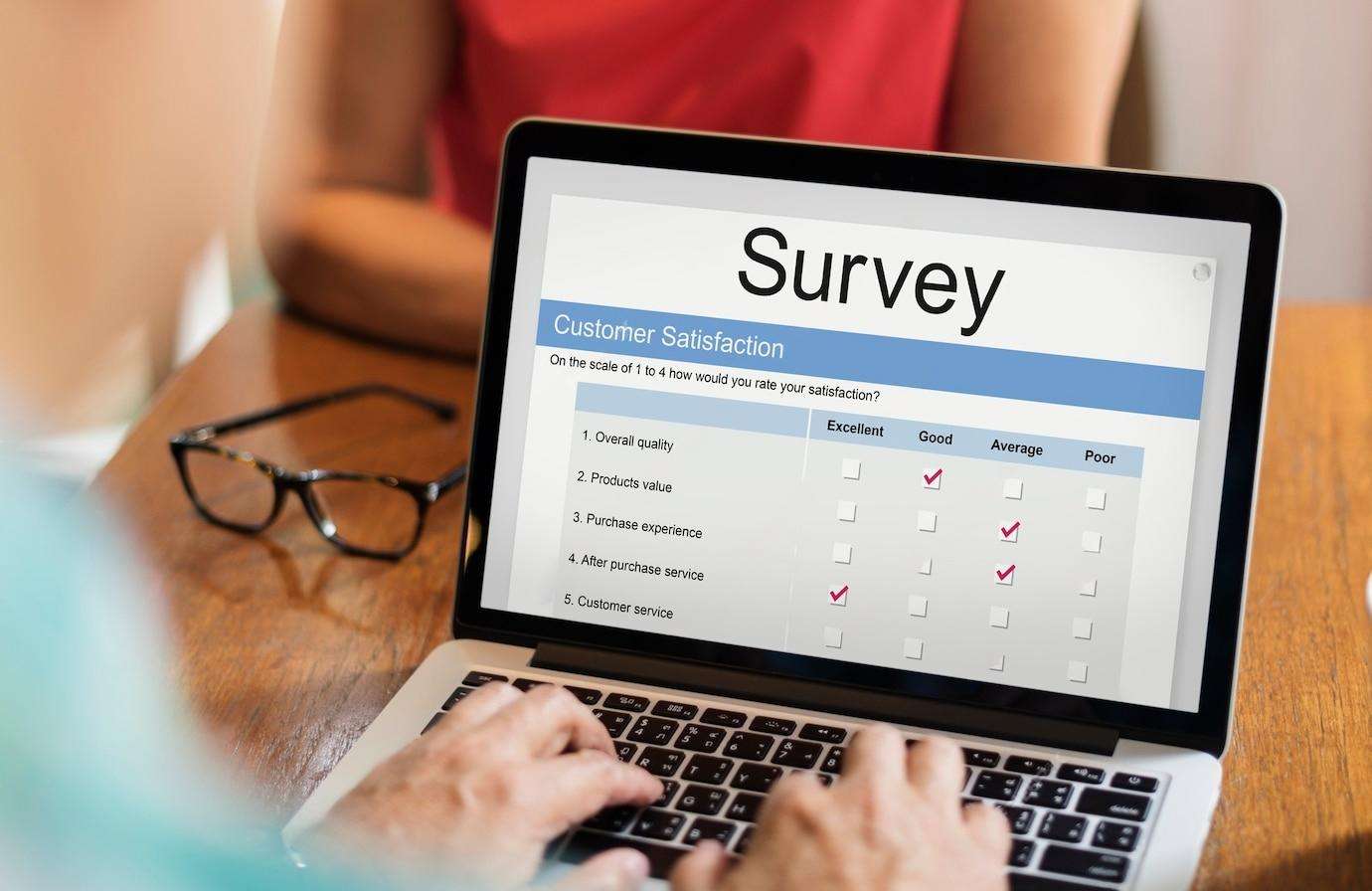LinkedIn is a powerful tool for business professionals, but there’s one feature that’s often overlooked: LinkedIn polls and surveys. In today’s hyper-competitive field, attracting high-paying clients isn’t about flashy sales tactics or aggressive marketing; it’s about connecting, engaging, and providing value. Polls and surveys offer a unique opportunity to do just that.

When used strategically, LinkedIn polls and surveys become a two-way street where you engage with your audience, understand their needs, and ultimately convert them into clients—clients who are willing to invest in your solutions. In this comprehensive guide, we’ll explore how you can leverage LinkedIn polls and surveys to attract high-paying clients, giving you practical insights that you can implement immediately.
1. Introduction to LinkedIn Polls: A Beginner’s Guide
LinkedIn polls may seem like a simple feature, but they hold immense power when used correctly. Polls allow you to ask a question and provide several answer options, making it easy for your audience to engage with a single click. But what makes them especially effective for attracting high-paying clients?
- Low-effort, high engagement: Polls are quick, easy to interact with, and non-invasive. For busy professionals, this is the perfect way to provide input without investing too much time. A well-crafted poll grabs attention and pulls people into your orbit.
- Instant feedback: People love instant gratification. Polls provide that dopamine hit as users see their vote immediately impact the results, keeping them engaged.
- Interactive content: Unlike static posts, polls allow your audience to participate. Participation breeds interest, and interest can lead to conversions.
Imagine you’re a consultant specializing in leadership training. A poll asking, “What’s the biggest challenge in managing remote teams?” immediately attracts engagement from managers facing this issue. Your expertise is immediately highlighted, and your solutions feel more relevant.
How to create your first poll:
- Click the “Start a post” button on your LinkedIn homepage.
- Select “Create a poll.”
- Write your question and add 2-4 answer options.
- Post and watch the engagement unfold.
2. How to Create Engaging LinkedIn Polls for Client Interaction
Creating a LinkedIn poll that attracts high-paying clients requires more than just a clever question. You need to craft your poll in a way that sparks meaningful interactions and positions you as a solution provider.
Ask strategic questions: Your poll should directly address the challenges or aspirations of your target clients. If you’re a marketing strategist, you might ask, “What’s your biggest challenge in scaling digital ads: budget, targeting, or creative content?” This resonates with business owners or marketers who are struggling with these issues.
Keep it simple: Too many options or a convoluted question can confuse users. Stick to 2-4 clear, concise options.
Follow up with insights: After the poll closes, analyze the results and share a post discussing the insights you’ve gained. For example, if most respondents cite targeting as their biggest issue, you could create a follow-up post on effective audience segmentation strategies. This shows you’re paying attention and are ready to provide solutions.
Use images and videos: Polls accompanied by visuals or short explainer videos can be more engaging. It breaks the monotony of the feed and makes your poll stand out.
3. Best Practices for Designing Effective LinkedIn Surveys
While polls are excellent for quick engagement, surveys allow you to dig deeper into your audience’s pain points. High-paying clients appreciate businesses that take the time to understand their challenges, and surveys are a perfect tool for this.
Keep it concise: No one has time to fill out a 20-question survey, especially busy decision-makers. Aim for 5-10 well-thought-out questions.
Use a mix of open and closed-ended questions: Open-ended questions give respondents space to elaborate, but don’t overdo it. Mix in multiple-choice questions to make the survey easier to complete.
Tie your questions to your services: Each question should have a purpose. For instance, if you’re a financial advisor, a question like, “What’s your biggest financial concern: retirement, investments, or taxes?” gives you direct insight into the respondent’s needs while positioning you to offer tailored advice.
Use surveys for lead qualification: Add a question like, “Are you looking for expert financial guidance in the next six months?” This helps you identify which leads are most likely to convert into high-paying clients.
4. The Strategic Use of LinkedIn Polls to Gather Market Insights
LinkedIn polls are more than just a way to generate engagement; they’re a strategic tool for gathering market insights. Think of it as crowd-sourcing opinions from your target audience without having to hire an expensive research firm.
For example, if you’re thinking of launching a new product or service, you can ask your audience, “Which of these would you be most interested in: cost-saving software, time-management tools, or customer retention strategies?” The results give you direct input into what your market needs, allowing you to make informed decisions.
5. How to Use LinkedIn Polls to Identify Client Pain Points
High-paying clients are always willing to invest in solutions that solve their most pressing problems. Polls give you a direct line into those pain points.
For example, a simple poll like, “What’s your biggest challenge in managing your business: cash flow, employee retention, or customer acquisition?” can reveal where your potential clients are struggling the most. Once you’ve identified their pain points, you can create content, services, or products that directly address these issues, positioning yourself as the expert they need.
6. Leveraging LinkedIn Polls for Content Ideas and Client Engagement
Stuck on what to write or post next? Use LinkedIn polls as a content goldmine. By asking your audience what they’re struggling with or what they’d like to learn more about, you can create content that is laser-focused on their needs.
For example, a poll asking, “What’s your biggest challenge in growing your business: lead generation, scaling operations, or customer retention?” not only engages your audience but also provides you with a steady stream of content ideas.
After your poll closes, you can create blog posts, LinkedIn articles, or even video content addressing the top challenges highlighted by your audience. This not only boosts engagement but also shows that you’re in tune with your market’s needs.
7. How to Promote Your LinkedIn Polls for Maximum Reach
Creating a poll is only half the battle; getting it in front of the right eyes is the other half. Here’s how to maximize the reach of your LinkedIn polls:
Use relevant hashtags: By adding industry-specific hashtags, you can extend the reach of your poll beyond your immediate connections.
Tag industry leaders: Tagging relevant people in your poll can increase its visibility. For example, if you’re in the tech space, tagging a few well-known tech influencers can drive more views and engagement.
Post at optimal times: Research shows that LinkedIn engagement peaks on Tuesdays, Wednesdays, and Thursdays, particularly between 8 AM and 11 AM. Posting during these times increases the likelihood of your poll being seen by a wider audience.
8. Analyzing LinkedIn Poll Results to Inform Business Decisions
Once your poll has closed, it’s time to analyze the data. Don’t just let it sit—use it to make strategic decisions.
For example, if your poll shows that 60% of respondents struggle with digital marketing, that’s a clear signal that there’s demand for services or content around that topic. You can adjust your business offerings to focus more on that area, ensuring you meet the needs of your audience.
Polls are a low-cost way to gather invaluable market data that can shape your business strategy, ensuring that you’re always on track to meet client demand.
9. How to Use LinkedIn Surveys to Qualify Leads
Surveys are a powerful tool for lead qualification. By asking a few targeted questions, you can easily segment your leads based on their needs, budget, and readiness to buy.
For example, asking a question like, “Are you planning to invest in digital marketing services in the next 6 months?” can help you identify hot leads who are ready to make a decision soon.
Once you’ve gathered this data, you can follow up with personalized outreach tailored to each lead’s unique situation, increasing the likelihood of conversion.
10. Creating Polls that Resonate with High-Paying Clients
Attracting high-paying clients requires a different approach than engaging with your general audience. These clients want to know that you understand their unique challenges and can provide real solutions.
To create polls that resonate with high-paying clients, focus on their specific pain points and goals. For example, if you work with C-suite executives, a poll like, “What’s your biggest challenge in scaling your business: talent acquisition, process optimization, or leadership development?” speaks directly to their needs and positions you as someone who understands the high-level challenges they face.
By focusing on the issues that matter most to high-paying clients, you increase the likelihood that they’ll engage with your poll and ultimately see you as a valuable resource.
11. The Role of Timing in LinkedIn Poll Engagement
Timing is everything when it comes to LinkedIn polls. Posting at the right time can significantly increase engagement, while posting at the wrong time can result in your poll getting lost in the shuffle.
Best times to post: Research shows that LinkedIn engagement peaks on Tuesdays, Wednesdays, and Thursdays, with the highest engagement occurring between 8 AM and 11 AM. Posting during these times ensures that your poll reaches the widest possible audience.
However, it’s important to test different times with your own audience to see what works best. If you notice that your polls perform better in the afternoon, adjust your posting schedule accordingly.
12. How to Use LinkedIn Polls in Your Content Marketing Strategy
Polls can be a valuable addition to your content marketing strategy. They provide a direct line to your audience’s interests and challenges, allowing you to create content that resonates with them.
Pre-content polls: Before you write your next blog post or article, run a poll asking your audience what they’d like to learn about. This not only boosts engagement but also ensures that your content is aligned with what your audience cares about.
Follow-up content: After your poll closes, create content based on the results. For example, if your poll reveals that most of your audience is struggling with lead generation, write a detailed guide on how to improve lead generation strategies.
13. The Benefits of Using LinkedIn Polls for Audience Segmentation
Audience segmentation is a crucial part of any marketing strategy, and LinkedIn polls make it easy to segment your audience based on their responses.
By running polls that ask specific questions about your audience’s preferences or pain points, you can gather data that helps you divide your audience into meaningful groups. For example, if a poll reveals that 40% of your audience is struggling with customer retention, you can create content or offers specifically tailored to that segment.
Once you’ve segmented your audience, you can personalize your outreach and marketing efforts, ensuring that each group receives relevant, targeted messaging.
14. How to Collect and Share LinkedIn Poll Data with Your Network
Once your poll has gathered valuable insights, it’s time to share that data with your network. But how do you do it in a way that builds credibility and fosters further engagement?
Create a report: Summarize the results of your poll in an easy-to-digest format. This could be a simple LinkedIn post or a downloadable PDF that provides deeper insights.
Add commentary: Don’t just share the raw data. Add your own insights and expertise to position yourself as a thought leader. For example, if your poll reveals that most business owners are struggling with scaling their operations, share your tips on how to overcome that challenge.
Tag participants: When sharing poll results, tag key participants who contributed meaningful responses. This keeps the conversation going and encourages further engagement.
15. Understanding the Limits and Opportunities of LinkedIn Polls
While LinkedIn polls are a powerful tool, they do have their limitations. Understanding these boundaries can help you maximize their potential while avoiding common pitfalls.
Limits:
- Short response time: Polls are quick, but this also means you might not get deep insights. If you need more detailed feedback, consider using surveys or direct outreach.
- Limited answer options: Polls are best for simple questions with a few options. For more nuanced responses, a survey or follow-up conversation might be better.
Opportunities:
- Easy engagement: Polls offer a low-barrier entry for engagement. Even busy professionals can take part, making them ideal for getting quick feedback.
- Viral potential: If your poll resonates with your audience, there’s potential for it to be shared widely, increasing your visibility and reach.
16. Using LinkedIn Polls to Drive Discussions in Groups
LinkedIn Groups can be goldmines for building relationships and establishing authority in niche industries. Polls can play a crucial role in driving discussions within these groups.
Kickstart conversations: Use a poll to ask a thought-provoking question that’s relevant to the group’s focus. For instance, in a marketing group, you might ask, “What’s the most effective digital marketing tactic for small businesses in 2024?”
Engage with comments: Once people start responding to your poll, dive into the comments to spark further conversation. Ask follow-up questions or offer insights based on their responses.
17. How to Use LinkedIn Polls to Validate Business Ideas
Thinking of launching a new product or service? Before investing time and money into development, use LinkedIn polls to validate your idea and ensure there’s a demand for it.
Ask direct questions about your offering: Create a poll asking whether your audience would find your product or service valuable. For example, “Would a coaching program that guarantees a 20% increase in revenue within six months interest you?”
Gauge pricing preferences: High-paying clients often care about ROI. Ask questions like, “What would you expect to pay for a high-quality leadership training program?”
Test different approaches: If you’re unsure which format or feature would be more appealing, run comparative polls, like “Which format would you prefer for business training: 1-on-1 coaching, group workshops, or online courses?”
18. Creating a LinkedIn Survey Campaign for Client Feedback
If you want to gather more detailed feedback from your clients or prospects, consider creating a LinkedIn survey campaign. Surveys allow you to ask deeper questions and gain more comprehensive insights.
Start with clear objectives: Know exactly what you want to learn from your survey. Whether it’s client satisfaction, service improvements, or understanding new market trends, have a focused goal in mind.
Craft thoughtful questions: Keep your questions relevant to your objectives. If you’re gathering feedback on a recent project, ask, “What’s one thing we could have done better?” This invites constructive criticism while showing that you’re open to improvement.
Incentivize participation: Offering a small incentive like a downloadable resource or discount can encourage more people to complete your survey.
19. How to Use LinkedIn Polls and Surveys to Test New Products or Services
Polls and surveys are excellent tools for testing the viability of new products or services before you commit to a full launch.
Polls for quick validation: If you’re unsure whether there’s a market for your new product, a simple poll can help you gauge interest. For example, “Would you be interested in a time-saving app for project management?”
Surveys for detailed feedback: Once you’ve validated your idea with a poll, use a survey to gather more detailed feedback. Ask questions about pricing, features, and what would make your product more appealing.
By testing your ideas with polls and surveys, you can minimize risk and ensure that your product is aligned with your audience’s needs.
Conclusion
LinkedIn polls and surveys are more than just a tool for engagement; they’re a powerful resource for attracting high-paying clients, gathering market insights, and testing new ideas. By strategically using these features, you can position yourself as a thought leader, understand your audience’s needs, and ultimately convert leads into high-paying clients. Whether you’re new to LinkedIn or a seasoned pro, these tools can be your secret weapon for business growth.















